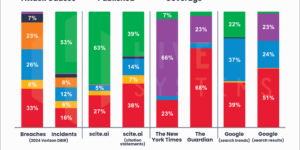Hurricane Michael will probably end up causing at least $25 billion in economic losses.
About $3 billion of that will fall on the federal flood insurance program and private insurers may get hit with $9 billion to $10 billion in claims, according to Chuck Watson, a disaster modeler with Enki Research in Savannah, Georgia. About half the damage probably won’t be covered by insurance.
The storm made landfall Wednesday in the Florida Panhandle, where most of the damage occurred. The storm brought winds of 155 miles (249 kilometers) per hour, the fourth-strongest hurricane ever to reach the U.S. mainland. It scoured the area near Panama City of trees and knocked down buildings, and has been blamed for at least two deaths.
“Unlike several recent bad storms like Harvey, Florence, Michael is a traditional hurricane event where the most intense damage is in a narrow swath along the coast and along the track of the storm caused by either wind, waves or storm surge,” Watson said.
Most of the damage from Florence and Harvey was from inland flooding after the storms dropped record amounts of rain. Hurricane Florence landed in North Carolina in September and Harvey struck Texas last year — wind played a far less significant role with both of those systems.
Michael was outside Charlotte, North Carolina, Thursday morning with 50 mph winds and was expected to move into the Atlantic Ocean overnight. It will eventually get absorbed by larger weather systems at sea, but some of its energy could reach Europe by next week, said Paul Walker, a meteorologist at AccuWeather Inc. in State College, Pennsylvania.




















 Moderating Premium Rates, Falling Yields: European Insurers Resilient
Moderating Premium Rates, Falling Yields: European Insurers Resilient  Reporter’s Notebook: ‘Nobody Else Does Telematics,’ Lemonade Exec Says
Reporter’s Notebook: ‘Nobody Else Does Telematics,’ Lemonade Exec Says  California Vocational School CEO Charged With 23 Counts of Insurance Fraud
California Vocational School CEO Charged With 23 Counts of Insurance Fraud  Dear Elon and Vivek: Insurance Commissioners Urge DOGE to Ditch FIO
Dear Elon and Vivek: Insurance Commissioners Urge DOGE to Ditch FIO 





